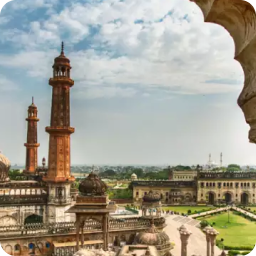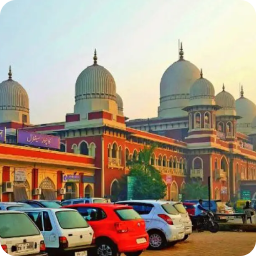| Inclusive Growth: Definition, Strategies, Policy & Challenges |
Introduction to Inclusive Growth
To prepare for INDIAN ECONOMY for any competitive exam, aspirants have to know about Inclusive Growth. It gives an idea of all the important topics for the IAS Exam and the Economy syllabus (GS-II). Important Inclusive Growth terms are important from Economy perspectives in the UPSC exam. IAS aspirants should thoroughly understand their meaning and application, as questions can be asked from this static portion of the IAS Syllabus in both the UPSC Prelims and the UPSC Mains exams.
“Inclusive Growth refers both to the pace and pattern of growth, which are interlinked and must be addressed together.” — World Bank
Inclusive growth entails comprehensive growth, shared growth, and pro-poor growth.
In a broad sense, Inclusive Growth implies the inclusion of all sections of society in the process of economic development and the sharing of its benefits. Therefore, IG is not only an outcome or end but also a process or a means in itself.
According to the United Nations Development Program (UNDP), inclusive growth is “the process and the outcome where all groups of people have participated in the organization of growth and have benefited equitably from it”. This implies that inclusive growth should include all sections as beneficiaries as well as partners in growth and that inclusion of the excluded should be embedded in the growth process.
Inclusive growth is also defined in terms of reduction in inequalities in incomes, assets as well as in vertical inequalities (individual inequalities) and horizontal inequalities (group inequalities).
Inclusive Growth in India: Key Features for Sustainable Development
- Address the constraints of the excluded and marginalized.
- Participation from all sections of society
- Reduction in disparities among per capita incomes between:
- Different sectors of economy
- Different Sections of society
- Rural And Urban Areas
- Different genders
- Non – discriminatory
- Higher potential of poverty reduction
- Ensure access of people to basic infrastructure and basic services/capabilities such as basic health and education. This access should include not only the quantity, but also quality of these basic services.
- Include poor, lagging socio – economic groups and lagging regions as well as they are partners in this growth.
- Broader components of Inclusive growth
-
- Equitable distribution of income
- Social Sector Development
- Reduction in regional disparities
- Protecting the environment
- Industrial Development
- Agriculture Development
Why Inclusive Growth Matters for India’s Future Development?
- There is a severe lack of accessibility to core public services.
- Public spending across core services stays at a dismal percentage of GDP (1 – 2%). Though institutions have been erected but quality is uneven.
- Malnutrition and undernourishment have been prevalent in society among marginalized sections, especially among adolescent girls.
- Economic and Social inequalities exist at intra-state and inter-state level. Poor growth rates and poor public services in lagging states make sure that disparity increases. The data is reflected in the Human Development Index and Per Capita Income across different states.
- Low agriculture growth, low quality employment growth, low human development, rural-urban divides, gender and social inequalities, and regional disparities etc. are the problems for the nation
- Reducing poverty and inequality and increasing economic growth are the main aims of the country through inclusive growth.
- Growth has been uneven across sectors and locations. For instance, agriculture has been lagging behind and in countries such as India and China, some regions have advanced faster than others. Policies are also relatively ignored in the agriculture sector.
- Due to trade competitiveness, foreign direct investment and new technologies have demanded skilled labor. In some cases, labor laws also often discriminate against formal employment and encourage ‘casualization’ of labor.
- Unsustainable economic growth.
Essential Elements of Inclusive Growth in India:
Inclusive growth is a multi-dimensional concept that facilitates inclusion from a variety of fronts that include:
- Skill Development: Harnessing the demographic dividend will depend upon the employability of the working age population, their health, education, vocational training and skills. Skill development plays a key role here. India is facing a dual challenge in skill development:
- First, there is a paucity of highly trained workforce
- Second, there is non-employment of conventionally trained youths
According to the Economic Survey 2017, over 30% of youth in India are NEET (Not in education, employment or training).
- Financial Inclusion: Financial Inclusion is the process of ensuring access to financial services to vulnerable groups at affordable costs. Financial inclusion is necessary for inclusive growth as it leads to a culture of saving, which initiates a virtuous cycle of economic development.
- Technological Advancement: The world is moving towards an era of Industrial Revolution 4.0. These technological advancements have capabilities to both decrease and increase inequality, depending on the way these are being used. Several initiatives have been taken by the government, e.g. Digital India Mission, so that a digitally literate population can leverage technology for endless possibilities. Technology can help to combat other challenges too.
- Economic Growth: India is among the fastest-growing major economies in the world. However, currently the Indian economy is facing slowdown due to both cyclic and structural challenges. However, the target of becoming a $ 5 trillion economy by 2024-25 can allow India to reduce inequality, increase social expenditure and provide employment to all.
- Social Development: It means the empowerment of all marginalized sections of the population like SC/ST/OBC/Minorities, women and transgenders. Empowerment can be done by improving institutions of the social structure i.e. hospitals especially primary care in the rural areas, schools, universities, etc. Investment in social structures will not only boost growth (by fiscal stimulus) but will also create a healthy and capable generation to handle future work.
Inclusive Growth Essentials: Understanding the Key Elements
- EMPLOYMENT GENERATION
- POVERTY ALLEVIATION
- INDUSTRIAL DEVELOPMENT
- REDUCTION IN REGIONAL DISPARITIES
- AGRICULTURAL DEVELOPMENT
- SOCIAL SECTOR DEVELOPMENT
- EQUAL DISTRIBUTION OF INCOME
- ELEMENTS OF INCLUSIVE GROWTH
- ENVIRONMENT PROTECTION
Inclusive Growth in India: Insights from the 12th Five-Year Plans
- The plan document begins with anticipating three economic scenarios at the end of the 12th plan. These three scenarios are “Strong inclusive growth”, “Insufficient action” and “Policy Logjam”.
- The first one viz. Strong inclusive growth is the most optimistic one but needs effective implementation and a robust government.
The plan document discusses the following aspects of inclusiveness:
- Inclusiveness as Poverty Reduction: So that adequate flow of benefits to the poor and the most marginalized.
- Inclusiveness as Group Equality: The poor are certainly one target group, but inclusiveness must also embrace the concern of other groups such as the Scheduled Castes (SCs), Scheduled Tribes (STs), Other Backward Classes (OBCs), Minorities, women, the differently abled and other marginalized groups.
- Inclusiveness as Regional Balance: This aspect of inclusiveness relates to whether all States, and indeed all regions, are seen to benefit from the growth process. Improvement in infrastructure must therefore be an important component of any regionally inclusive development strategy.
- Inclusiveness as Reducing Inequality: There is a need to keep inequality into tolerable limits.
- Inclusiveness as Empowerment: The Plan document says that inclusiveness is not just about ensuring a broad-based flow of benefits or economic opportunities; it is also about empowerment and participation.
- Inclusiveness through Employment Programmes: The document stresses on the quality of assets created, which will determine whether MGNREGA can go beyond the safety net to become a springboard for entrepreneurship, even at the lowest income levels.
- Components of Inclusive Growth – 11th 5 year Plan
- Access to essential services
- Employment Generation
- Women empowerment
- Good governance
- Skill building
- Equality of opportunity
- Poverty Reduction
NITI Aayog’s Blueprint for Inclusive Growth in India
New India @75 vision has the following objectives for the inclusive growth:
- To have a rapid growth, which reaches 9-10% by 2022-23, which is inclusive, clean, sustained and formalized.
- To Leverage technology for inclusive, sustainable and participatory development by 2022-23.
- To have an inclusive development in the cities to ensure that urban poor and slum dwellers including recent migrants can avail city services.
- To make schools more inclusive by addressing the barriers related to the physical environment (e.g. accessible toilets), admission procedures as well as curriculum design.
- To make higher education more inclusive for the most vulnerable groups.
- To provide quality ambulatory services for an inclusive package of diagnostic, curative, rehabilitative and palliative care, close to the people.
- To prepare an inclusive policy framework with citizens at the center.
Challenges in Achieving Inclusive Growth:
- Unemployment and underemployment
- Poverty and resultant poor human resource development
- Poor skilling and professional competencies
- Lack of women in mainstream economic activities.
- Poor nutritional, health and educational indicators
- Agriculture Backwardness
- Issues with Social Development
- Regional Disparities
- Inadequate infrastructure
- Social inequality and discrimination
India’s Journey Towards Inclusive Growth
By the 12th five year plan the focus increased when the slogan was designed as “Faster, sustainable and More inclusive growth”. The government evolved a clear short term and long-term policy towards the cause of inclusive growth.
- Short Term Policy: It aimed at supplying those goods and services to the disadvantaged and marginalized sections of the society which are bare minimum and essential in nature. Sponsored schemes are run by the governments for this purpose. The following areas are touched by this policy:
- Food and Nutrition: Annapurna, Antyodaya, Mid-Day Meal, National food security act etc.
- Healthcare and Sanitation: National health mission, Swachh Bharat Abhiyan, ASHA, Mission Indradhanush etc
- Housing: Indira Awas Yojana, Rajiv Awas yojana etc
- Drinking Water: National rural drinking water programme etc.
- Education: Sarva Shiksha Abhiyan, Rashtriya Madhyamik Shiksha Abhiyan etc.
- Long Term Policy: This is aimed at bringing in self dependence in the target population. An element of sustainability is present in it. The attempts by the government are classified as:
- All the schemes which aim at poverty alleviation and employment generation
- All the programmes which promote education at any level
- Vocationalisation of education
- Skill development
- The strategy for inclusive growth in 11th and 12th five year plans aims at achieving the objectives of sustainability and inclusiveness. The strategy emphasized that GDP is not an end in itself but the means to an end.
- India is committed to securing inclusive growth, leading to sustainable development and to usher in a governance of transparency and accountability.
- India believes that poverty eradication and job creation are primary objectives to achieve inclusive growth under the ambit of Sustainable Development Goals in United Nations Framework.
Inclusive Growth Initiatives: Schemes Shaping India’s Development
| Financial Inclusion: |
|
| Employment and inclusive growth: |
|
| Agriculture and inclusive growth: |
|
| Technology and inclusive growth: |
|
| Skill development and inclusive growth: |
|
Concerns with Inclusive Growth Schemes in India:
- Challenges in Food Security and Malnutrition: Despite the high and fast growing emerging market economy, India has some shocking statistics when it comes to food security.
- As per the recent UNICEF report, at least one million children under five die in India due to malnutrition related issues.
- Here, the burden among the scheduled castes, scheduled tribes, other backward castes and rural communities is highest in terms of acute malnutrition.
- Among the states, it is Madhya Pradesh and Rajasthan that have acute problems in terms of malnutrition.
- Recognizing the Vital Role of Social Enterprises: Social enterprises can play a key role in India’s agenda of inclusive developments. However, just like in many other countries, they are not officially or legally recognised as a sector in India, even while they play an important part in the fight against poverty.
- Barriers to Achieving Inclusive Growth: The main reasons for India’s failure to achieve inclusive growth and distributive justice are:
- The failure of land reform
- The wrecking of the well-designed community development programme that aimed at the all-round development of the village
- The lack of success in providing adequate employment opportunities at living wages to a rising population
- The neglect of school education and the absence of special measures designed to help children of the poor to get a good school education.
- Continued dependence of some 60 percent of the workforce on low-productivity agriculture and allied occupations for employment and living.
Promoting Inclusive Growth: World Economic Forum’s Insights on Social Inclusion and Economic Growth
- Investing in Citizens’ Capabilities: First, countries should increase public and private investment in their citizens’ capabilities, which is the most important way they can durably lift their rate of productivity growth.
- Upgrading Work Rules and Institutions: Second, governments, together with employers’ and workers’ organizations, should upgrade national rules and institutions relating to work. These influence the quantity and distribution of job opportunities and compensation, and thus the level of purchasing power and aggregate demand within the economy.
- Investing in Labor-Intensive Sectors: Third, countries should increase public and private investment in labor-intensive economic sectors that generate wider benefits for society. These include sustainable water, energy, digital, and transport infrastructure, care sectors, the rural economy, and education and training.
Way Forward:
- Enhancing Education and Skill Development: With the onset of the IT revolution it has become obligatory for new entrants to acquire even higher levels of skills. Hence it is a matter of urgency to provide adequate facilities for quality school education and impart relevant skills to the disadvantaged.
- Improving Schools and Teacher Training: The working of existing government schools should be improved as a matter of priority. Hence the need to improve the functioning of government schools without losing more time. There is also a need to expand and modernize teacher-training facilities.
- Promoting Labor-Intensive and Inclusive Economic Growth: It is also important that growth in developing economies continues to remain more labor- intensive and broad-based, as a generation of production employment opportunities on a large scale is perhaps the best way for including the excluded and marginalized sections of the population.
- Agricultural: research needs to be greatly strengthened both in terms of the resources devoted to it and also by implementing institutional reform along the lines recommended by the Mashelkar Committee and the Swaminathan Committee.
- Taxation: More progressive tax system in India would help raise capital for expenditure on infrastructure, healthcare, basic services and education.
- Rights-Based Approach: It is critical to adopt a rights-based approach accepting the citizenship’s rights of people.
- Provision of education, healthcare, basic infrastructural needs are part of the basic rights of every citizen.
- A persistent increase in social investments such as education and healthcare are attached with long-term benefits and are part of a macro strategy for improving productivity of workers and for enhancing aggregate effective demand in the economy.
- Gram Sabha for Inclusive Growth should be empowered and made effective especially in tribal areas and as per FRA their consent should be made mandatory of mining lease.
Conclusion
Inclusive growth is crucial for India’s development, ensuring everyone benefits from economic progress. Despite challenges like poverty and inequality, government initiatives aim to empower marginalized communities through education, employment, and social welfare schemes. By focusing on skill development, financial inclusion, and equitable opportunities, India can achieve sustainable and inclusive growth for all.































